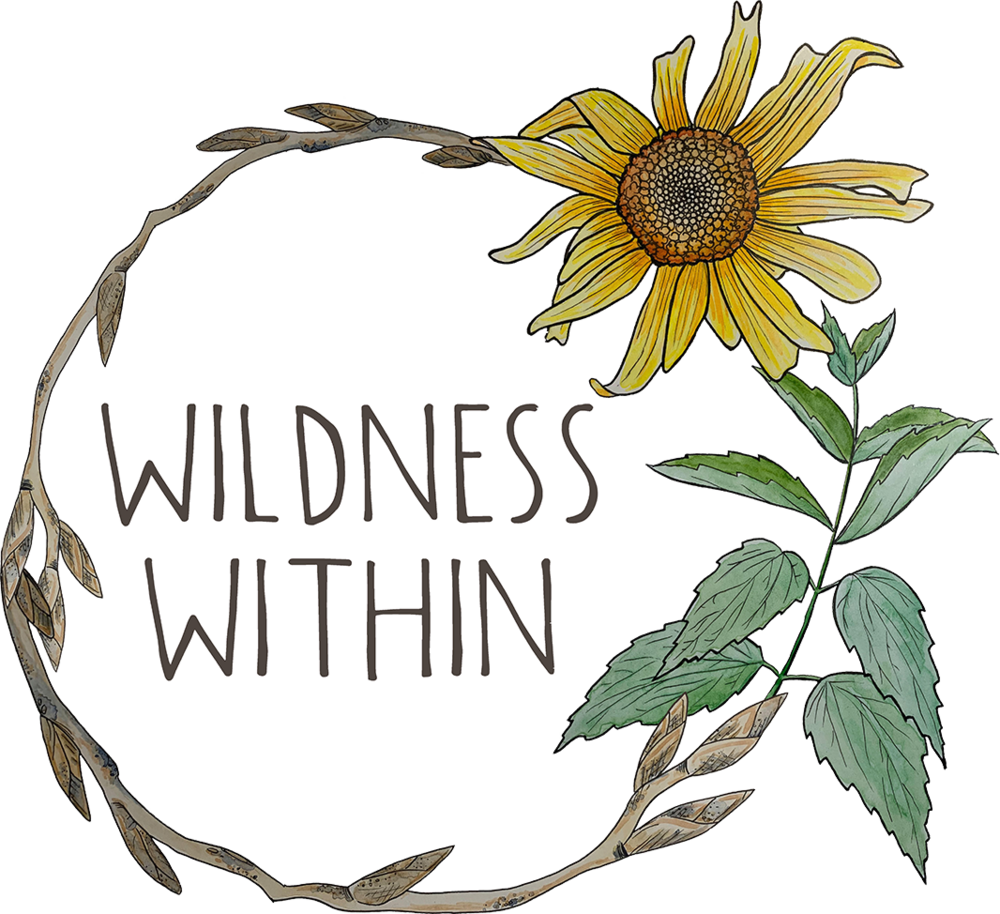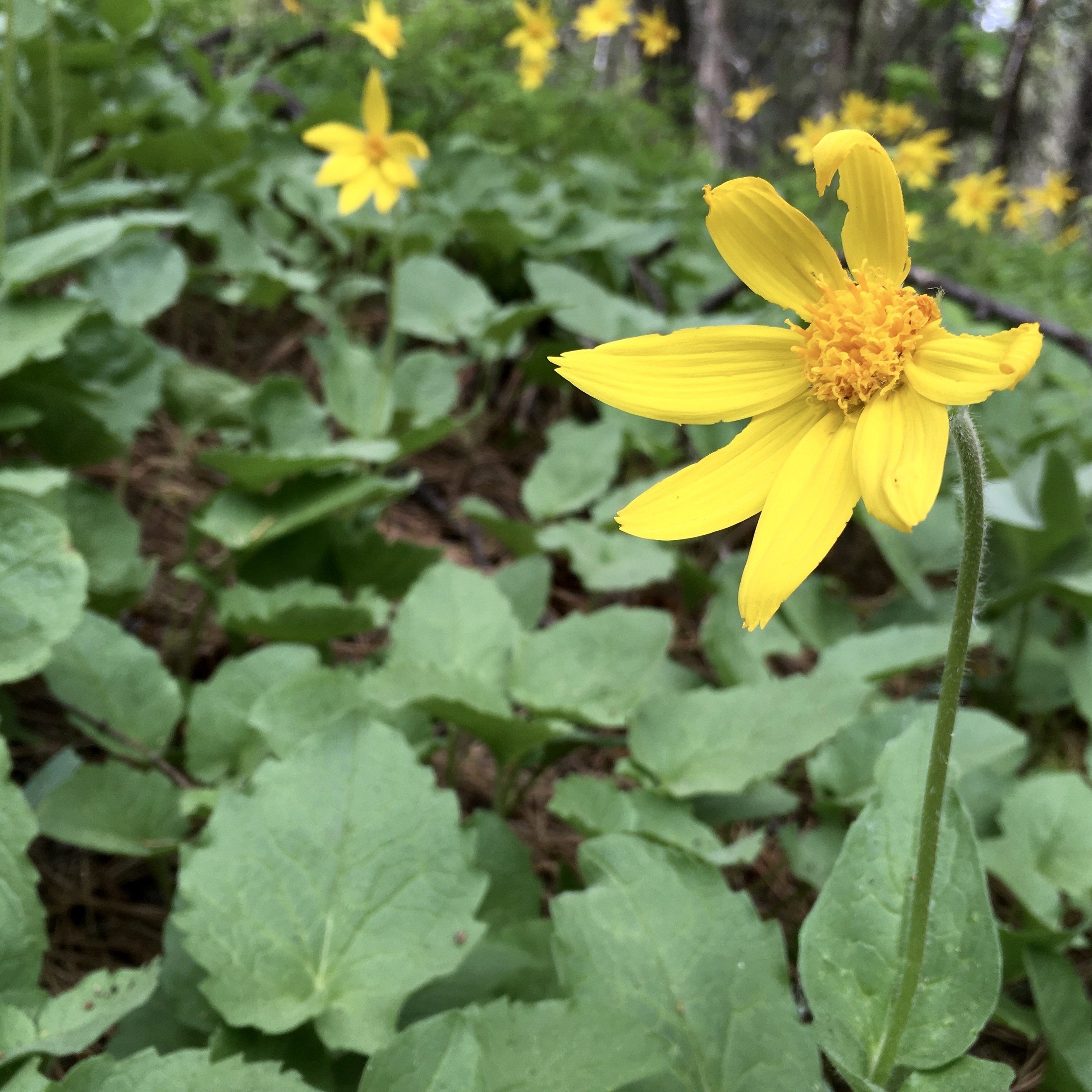Common Names: Velvet Dock, White Mullein, Torches, Candlewick plant, Blanket herb, Flannel plant, Our Lady’s Flannel, Indian Tobacco
Botanical Name: Verbascum thapsus
Plant Family: Scrophulariaceae
Parts Used: Leaves, Flower, Root
Actions: Expectorant, demulcent, antispasmodic, antitussive, astringent, anodyne, vulnery (Systems affected: Lungs and Stomach)
Habitat: Disturbed areas with full to partial sunlight. I’ve found Mullein anywhere from a waste-area near train tracks to a beautiful wild setting between juniper trees and ponderosa pines.
Collection: Flowers and buds can be collected singly just as they begin to bloom throughout summer. The leaves are best collected individually from the stalk of second-year plants (like Burdock, mullein is a “biennial” meaning it flowers its second year then dies back).
If you look closely, you can see the stellate (star-like) hairs that cover the leaves of Mullein.
Mullein Medicine:
There have been countless times when I am outdoors walking with a group and I ask people “what’s this plant?” (pointing to mullein). At least one person in the group will yell out “Nature’s toilet paper!” Hmm, I wonder… Why would anyone use such a useful plant to wipe with? In fact, some folks I know would be shocked to hear that mullein is being disrespected as such. Mullein is powerful medicine. This plant also has various ethnobotanical uses, including fire-making and keeping. So, perhaps, one might reconsider nature’s toilet paper…
Lung & Bronchial Congestion
Bronchial congestion can include stagnant phlegm, swollen lymph nodes, dryness or constriction. Mullein’s leaves and roots have expectorant qualities that help relieve this discomfort by moving mucous and phlegm from the throat and lungs. It starts by loosening up the stagnant mucous and then assisting the body’s ability to cough (removing the phlegm and mucous).
Oddly enough, smoked mullein leaf helps soothe the throat and productive coughing. Inhaling the smoke of mullein also calms the respiratory system and is used as an antispasmodic. Make sure to dry mullein leaves completely and then break down/rub into little pieces (fluffy mess) before smoking.
Flowers for Earaches
Mullein flower can help ease earaches, yet most importantly heal bacterial infections within the ear. The flowers can be infused in alcohol (to form a tincture) or an oil and then dropped into the ear for relief. Kiva Rose recommends using a tincture form because the alcohol base is also drying and helps speed up recovery. Yet, ear oils can be more soothing and relieve pain and inflammation. Lesley Tierra gives a good description of how to administer ear drops (especially for young kids) in her book, “A Kids Herb Book; For Children Of All Ages”:
“-Have the person lie on his/her side with the affected ear up.
-Drip 2-5 drops into the affected ear.
-Place a small cotton into the ear to prevent the oil from spilling out.
-Have the person continue lying on his/her side for 5-10 minutes more. Keep the cotton ball in place.
-Repeat this process 5-6 times throughout the day until the symptoms are gone.
-A hot water bottle on the ear often speeds the healing process. In fact, earaches can often be relieved by heat alone if you immediately place a hot water bottle against the affected ear.
NOTE: Do not use if the eardrum is ruptured.”
Lymphatic Congestion
A tincture or tea of mullein leaf and/or flower can be used to help lymphatic circulation. As stated above mullein is an expectorant and demulcent, which loosens up phlegm or congestion. In this case, it moves lymphatic stagnation. Making a poultice with the leaves and applying it to any swollen lymph nodes will also increase lymph flow.
WHAT IS THE LYMPHATIC SYSTEM?
The lymph vessels (lymphatics) run parallel to our blood vessels and help move lymph (“interstitial fluid”; fluid that leaks into your tissues) to our lymph nodes and back to our circulatory system. The lymphatic system helps filter our blood vessels, moves toxic or foreign materials from our tissues, and teams up with immune cells to prevent infection and disease. The lymphatic system aids in internal movement and protects our body from bad pathogens.
Other uses for Mullein:
-Stalks can be dipped in fat and used as torched or huge candles.
-Mullein stalks can also make a great drill for hand-drill and making a fire…
OR the stalks can be used for sword fights (pick your weapon of choice)
-Ok, if you really want some soft, large leaves for wiping, mullein leaves can be used for toilet paper (but be careful, those stellate hairs can cause irritation or rashes on some folks)
-Fairy pillows, anyone?
Mullein Remedies:
Breathe-Easy Tea:
1 part Mullein leaves and/or root
1 part Elder flower
1 part Wild Cherry Bark
½ part Licorice Root
½ part Marshmallow leaf
Steep 3 tsp. of tea per 1 cup of water for 20-25 minutes. Drink as often as needed until cough subsides. This will also help loosen mucus and phlegm.
Sinus-Chest Oi:
½ cup Mullein infused oil
¼ tsp. Eucalyptus essential oil
1/8 tsp. Thyme and Tea Tree essential oil
Shake before using. Apply underneath nose, on throat, chest and back.
References:
Mullein Monograph by Ryan Drum
Medicinal Plants of the Mountain West by Michael Moore
Medicinal Herbs; A Beginner's Guide by Rosemary Gladstar
A Kid's Herb Book; for children of all ages by Lesley Tierra
The Way of Herbs by Michael Tierra
The Book of Herbal Wisdom, The Earthwise Herbal: Old World by Mathew Wood
Plant Healer Magazine by Kiva Rose












